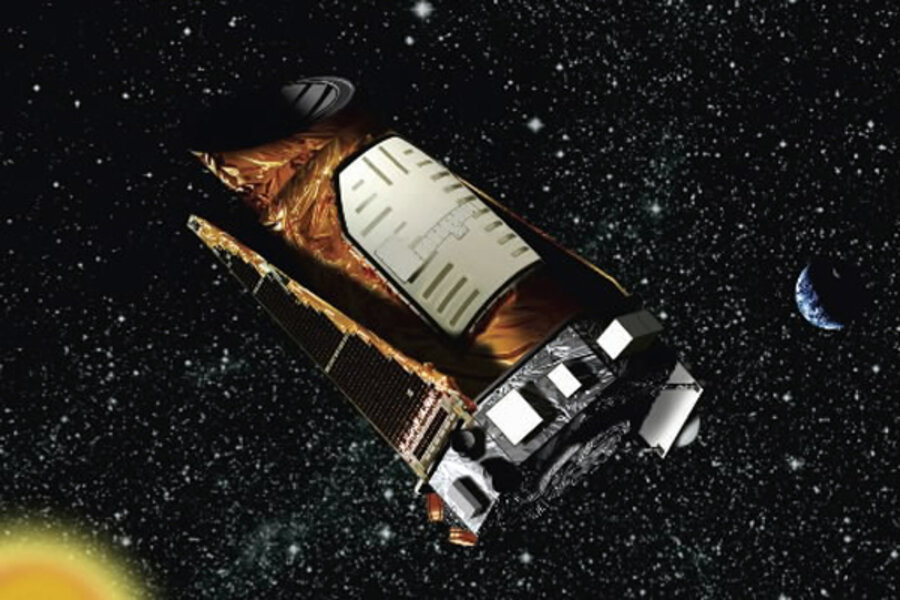NASA's Kepler observatory to continue hunt for strange new worlds
Loading...
NASA's prolific Kepler space observatory, which has found signs of thousands of alien planets, will keep hunting strange new worlds for at least four more years, the space agency announced Wednesday (April 4).
Funding for the Kepler mission, which has discovered more than 2,300 potential alien planets to date, was slated to run out this November. But a NASA review committee has recommended the telescope's planet-hunting effort be extended through at least fiscal year 2016.
"Kepler mission extended through FY16!" Kepler scientists wrote in a Twitter post today. "We are grateful and ecstatic!"
Searching for alien worlds
The $600 milllion Kepler observatory launched in March 2009 on a mission to find Earth-size planets in the so-called habitable zones of their parent stars — a just-right range of distances that could support liquid water and, perhaps, life as we know it. [Gallery: A World of Kepler Planets]
The telescope finds alien planets using what scientists call the transit method: It detects the telltale dips in brightness caused when an alien world crosses in front of, or transits, its star from Kepler's perspective. The Kepler spacecraft typically needs to witness three of these transits to firmly identify a planet candidate.
The instrument has been extremely productive, finding 61 confirmed alien planets to date, along with roughly 2,300 "candidate" worlds that still need to be vetted by follow-up observations. Kepler team members have estimated that the vast majority of these candidates — 80 percent or more — will likely end up being the real deal.
More time to look
Every two years, NASA conducts a peer-reviewed assessment of the missions in its astrophysics division, an activity called a Senior Review. This year's committee gave Kepler high marks for both performance and potential.
"The Kepler mission is an outstanding success," committee members wrote in their report. "Kepler is not only a unique source of exoplanet discoveries, but also an organizing and rallying point for exoplanet research."
Extending Kepler's mission could yield big dividends for several reasons, researchers have said. Because of the three-transit requirement, most of the worlds Kepler has found so far zip around their stars relatively quickly, in close-in orbits.
So granting Kepler at least four more years gives it a chance to look for planets in more distant orbits, allowing the telescope to survey the habitable zones of warmer stars. (It could take a hypothetical alien version of Kepler up to three years, after all, to see Earth transit the sun three times.)
Seeing more transits will also increase the signal-to-noise ratio for closer-in planets, allowing more of them to be detected, researchers have said.
The review committee's report did not explicitly lay out funding for Kepler's extended operations, but Kepler team members have said that it costs about $20 million per year to operate the mission at its current level.
The review looked favorably on all nine astrophysics missions it examined — which also include the Hubble, Chandra, Fermi and Spitzer space telescopes — saying all had performed well and should continue operating through at least fiscal year 2014.
You can follow SPACE.com senior writer Mike Wall on Twitter: @michaeldwall. Follow SPACE.com for the latest in space science and exploration news on Twitter @Spacedotcom and on Facebook.







